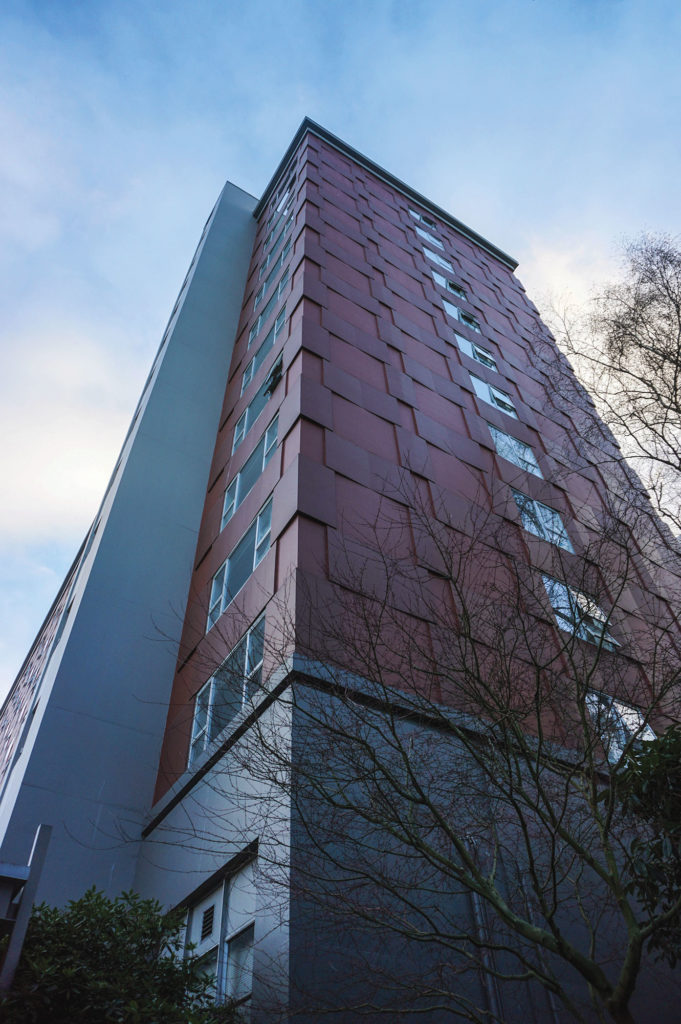With the end of winter quarter in sight, students in the College of Science and Engineering are working to complete their senior projects. One project in particular directly measures Seattle University’s preparedness for an earthquake.
Seattle U is located near the Seattle Fault, which according to the Seattle Emergency Management website, has not experienced an earthquake in 1,100 years.
Even though disaster has not struck recently, senior civil engineering major Danny Shaw is working with Conrad Beymer to conduct a seismic analysis of the Broadway parking garage located on Columbia and Broadway to determine the safety of the structure.
Shaw said that they plan to conduct their analysis using three different methods. Their first method checks to see if the structure abides by the current code provisions, a set of rules all structures must comply with, created by federal and state engineering boards. Their second method will be using the American Concrete Institute (ACI) which is an organization that performs concrete tests to determine the stability of columns and beams.
“Thirdly we’re doing experimental [which will determine] how the building will perform in a seismic event. I think [it] will be really applicable for Seattle,” Shaw said. “They all seem like they’re not necessarily relevant to each other, but each one of them is very important in their own way.”
Seattle U has already taken some initiatives since an earthquake struck the Puget Sound in 2001 to map out general disaster response information and invest in resources specifically for evacuating people.
Craig Birklid, the executive director of public safety, said that the university has also made efforts to better prepare their physical infrastructure by securing furniture and shelving to walls and upgrading or completely replacing old buildings.

Campion Hall is the tallest and most populated residency on SU campus
“All of the gas mains have earthquake sensors and the sprinkler systems [have bracing so they can] deliver water if there’s a fire after a quake. All of the elevators have [also] been upgraded [with] seismic sensors in them so they shut down in an earthquake,” Birklid said.
Even though Seattle U has added sensors to parts of their buildings, the university has not fully invested in maintaining the safety of all
its structures.
Shaw said that they have already begun to find a lot of deficiencies within the structure they are seismically analyzing.
“One of the bigger issues is that the structural members are not actually connected correctly,” Shaw said. “In this structure, everything is just sitting on top of each other and that’s really not good because if there’s any twisting action then there can be complete failure of that connection.”
In addition to these discoveries, Shaw explained that there is no design that allows for a building to survive everything.
“That’s impossible. You can’t design for an earthquake that’s moving in twenty different ways, but what we can do is make [a building] strong enough for people to get out,” he said.
To try to combat the uncertainty of a building’s safety and survival during an earthquake, Seattle U has recently began to regularly administer earthquake drills once a school year. Public Safety also sends out an informational email to supplement the drill that focuses on the different ways students, faculty and staff can stay informed, build kits and create escape plans in the event of an earthquake.
“We do not have a lot of big earthquakes, but we have the potential,” Birklid said. “We need to train ourselves because when the compression wave [comes] that is when things start coming off the shelves and moving about. We are trying to get the community used to responding without thinking.”
As helpful as the drills and informational emails intend to be, these methods of earthquake preparedness are also not fully effective. Professors continue to teach through drills and students mindlessly delete university-wide emails.
Devin Robichaux, a second-year civil and environmental engineering major, said that she knows she has gotten emails about earthquake drills, but she has not participated in one. “I know the earthquake drills happen and we get warnings about them, but no one actually listens to them,” she said.
Robichaux also works at the Redhawk Resource Hub Desk and said that as a student worker, she has not received training for natural disaster emergency situations.
“It’s not part of training. Our bosses do tell us we have a silent alarm emergency button, but in the case of natural disaster emergencies, we do not have much training,” she said.
Shaw fears that the university will overlook their results and just do the bare minimum as they have overlooked earthquake preparedness in the past. “It’s important to show the university that our findings are vital [and] can be devastating [if] they wait to make changes. I believe that this is part of the university and that every part should be safe.”
Hunter may be reached at
huechi@su-spectator.com







